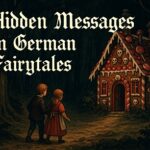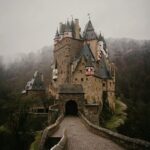
In the hushed stillness of a long-forgotten forest, where moss-laden trees whisper secrets of yore and the wind carries tales of times long passed, there lies a treasure most profound— the fairy tales of the Brothers Grimm. Just as in their tales, this article will endeavour to unravel their world, not in the clear prose of modernity, but in the mystic cadence that Jacob and Wilhelm themselves might have embraced.
Once upon a time, in a land marked by sprawling forests, picturesque villages, and the indomitable spirit of its people, two brothers set forth to gather stories. These tales, passed down from grandmother to grandchild, became the lifeblood of Germanic folklore. And as these stories found their way to parchment, they began their immortal dance through history.
A Glimpse into The Shadows
The Grimms’ tales were not merely tales. They were warnings and lessons, dressed in cloaks of magic and mystery. Be it the cruel fate of the wicked queen in “Snow White”, who dances to her end in heated iron shoes, or the twisted fate of Rumpelstiltskin, who tears himself in two, the narratives often concealed darker truths beneath their enchanted veneers.
In “Hansel and Gretel”, children abandoned by their parents find solace in a candied house, only to discover its sinister resident. Beneath the candy crust, one can decipher the hardships of famine, where desperate circumstances drove many to the brink.
Nature and Its Play
Just as nature weaves its threads through these tales, it held a profound place in the Grimms’ world. The deep woods, more often than not, were a realm of both refuge and peril. It’s in these very woods that Little Red Riding Hood encounters the cunning wolf and where Snow White finds solace among the dwarfs.
Yet, nature also offered redemption. The 12 princesses in “The Twelve Dancing Princesses” escape nightly to a magical realm, dancing away their sorrows on golden leaves and silver trees, highlighting nature’s dual role as both captor and liberator.
Beyond the Veil of Magic
Jacob and Wilhelm Grimm were not just storytellers but conservators. Their tales often reflected societal norms and challenges of their time. Themes of poverty, deceit, and redemption pervaded their stories, providing a mirror to the societal struggles and aspirations of their era.
The stories also impart wisdom, wrapped in layers of fantasy. The unyielding spirit of Cinderella, the wit of the Seven Ravens, and the courage of Hansel and Gretel are testaments to the human spirit’s tenacity and resilience.
The Legacy That Remains
As our journey through the enchanted woods draws to an end, the legacy of the Brothers Grimm stands tall like an ancient oak, its roots deeply embedded in the annals of history and its branches touching the very essence of human emotion and imagination.
Their tales, though dark and sometimes macabre, are timeless reflections of humanity. And as long as children seek bedtime stories and adults yearn for a touch of magic, the fairy tales of the Brothers Grimm will endure, whispering truths and casting spells, forever and always.
And so, dear reader, as the final word is written and the tale concludes, remember that in every shadow, there lies a story, and in every story, there lies a lesson. The enchanted woods of the Grimms’ fairy tales beckon. Do you dare enter?
Related article:
Hidden Messages in German Fairytales
German Fairy Tales: How Brothers Grimm Shaped World Literature
The Grimms’ Brothers Fairy Tales: Timeless Magic in Storytelling







